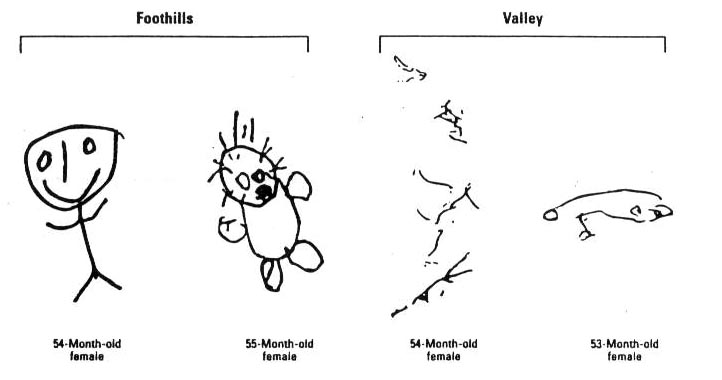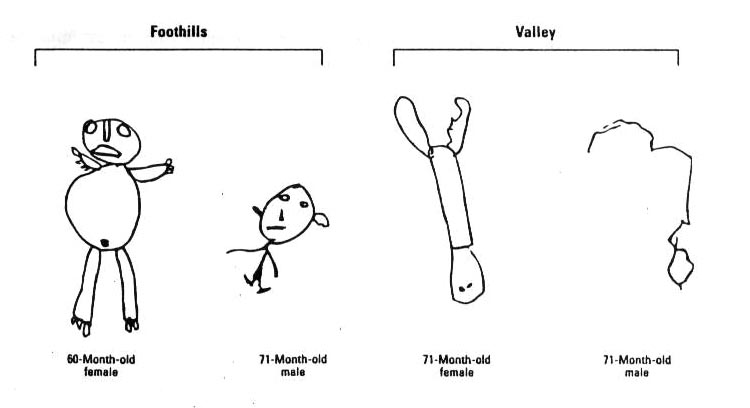PESTICIDE EFFECTS ON CHILDREN
Differences in drawing ability at the same age between
exposed and unexposed children were astonishing

Figure 1. Representative drawings of a person by 4-year-old Yaqui children from the valley and foothills of Sonora, Mexico.

Figure 2. Representative drawings of a person by 5-year-old Yaqui children from the valley and foothills of Sonora, Mexico.
Reprinted with permission
A landmark study* of preschool children, who were exposed to pesticides from birth and matching children who were not exposed, was published in June 1998. Both groups of Mexican children are Yaqui Indians, having the same genetic background, plus the same dietary and other cultural habits, thus eliminating the usual confounding variables, which can make impossible the study of pesticide effects in people. The Indians in the Yaqui valley had used pesticides since the 1940s,
Unprovoked violence was seen among the exposed children and none at all among the unexposed.
whereas those in the foothills had avoided their use. "Functionally, the exposed children demonstrated decreases in stamina, gross and fine eye-hand coordination, 30-minute memory, and the ability to draw a person. . . . [Unprovoked violence was seen among the exposed children and none at all among the unexposed.] Some valley children were observed hitting their siblings when they passed by, and they became easily upset or angry with a minor corrective comment by a parent. These aggressive behaviors were not observed in the foothills."
__________
*E. A. Guillette et al, "An Anthropological Approach to the Evaluation of Preschool Children Exposed to Pesticides in Mexico," Environmental Health Perspectives, 106(6):347-53, June 1998.
Article from NOHA NEWS, Vol. XXIV, No. 3, Summer 1999, page 1.